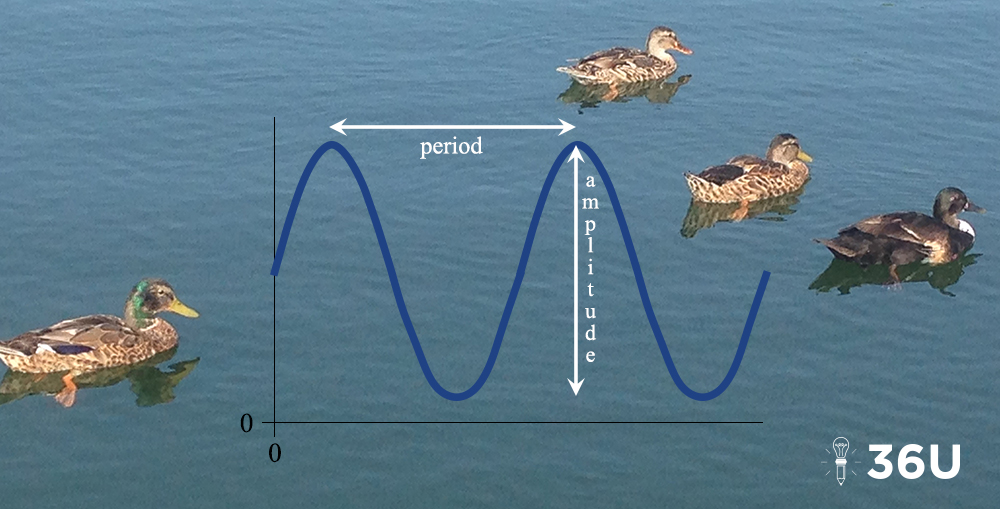English Tip – Redundancy
3.25.19
One of the easiest ways to eliminate answer choices on ACT English test? Eliminate redundancy! #English #ACT #36U
The phrase “caused by all of the precipitation” restates information given earlier in the sentence. On the ACT, find the answer choice that does not contain the redundancy.
ACT Math Tip – Period and Amplitude
(2.11.2019)
Recognize period and amplitude from trig graphs—even if you haven’t had Advanced Algebra! #mathmonday #math #ACT #ACTPrep #36U
period = distance for function to complete one full cycle
amplitude = difference between maximum and minimum function values
The Story of Lil Carl and the Arithmetic Series
Lil Carl bounced into kindergarten on a warm spring morning– energetic, but bored. Not one thing Ms. Artwaller had thrown at him that year had come close to testing his abilities. Exasperated Ms. Artwaller had had enough of Lil Carl disrupting class and decided to put an end to his shenanigans. “Find the sum of the first 100 whole numbers,” she said. At long last, Ms. Artwaller was finally able to teach the class without Lil Carl doing Lil Carl things…
After just a few moments Lil Carl was back: “5050. You did want me to add whole numbers 1 to 100, right?”

(This story is based on a legendary tale of one of the greatest mathematicians of the 18th and 19th centuries, Carl Friedrich Gauss. Read more here.)
How Did He Do That?
Even though the numbers are sequentially 1, 2, 3, and so on, you don’t have to add them in that order. In fact, the addition is much quicker if you change the arrangement. Add 1 and 100; add 2 and 99; continue with that pattern.
Step 1: Wrap the second half of the series below the first half, and then add.

Now, we have a bunch of 101s. In fact, we have 50 of them. So, instead of adding 100 terms, we can now multiply!
Step 2: Multiply!
We have fifty 101s now, so multiply:
50 • 101 –> 5050
The sum of 1 + 2 + 3 + … + 100 is 5050. We folded the series in half, so that we added the first half of the series with the second half of the series. This eventually allowed us to multiply to get the sum of the series.
What about Other Arithmetic Series?
Suppose we wanted to add 5 + 12 + 19 + … + 75. (Hint: The difference between consecutive terms is 7.)
Step 1: Fold the series in half.

Step 2: Find the number of terms after the series is folded in half.
a. From the first term of 5 to the last term of 75 is a jump of 70.
b. The jump between each term is 7, so there are 10 total jumps.
c. There are 11 terms in the original series of 5 + 12 + 19 + … + 75. (10 jumps and the first term)
d. After the series is folded in half, there will be five full pairs and an odd term in the middle without a pair. We will call that 5 ½ pairs.
Step 3: Multiply!
The pairs add to 80. There are 5.5 pairs.
80 • 5.5 –> 440
Arithmetic Series Formula
Arithmetic series can always be added with the method shared above. If had rather use a formula, however, here it is:

where n = # of terms in the series, t1 is the first term in the series, and tn is the last term in the series.
Please note: The formula mirrors the method used above. The first and last terms are added (t1 + tn) and then multiplied by half of the number of terms in the series (n/2).
How Will This Look on the ACT?
Try this example from the 2014-2015 Preparing-for-the-ACT Guide (property of ACT Inc). If needed, start by writing out the terms in the sequence.
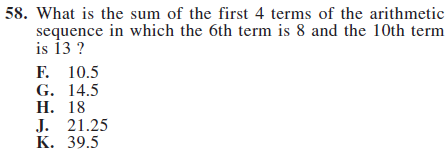
Recent and Related Posts
#1 Skill Needed to Score Well on the ACT May Be Reading Comprehension
Get a Copy of Your ACT and Fix the Mistakes
The Juggling Act Required by the ACT English Test
36U Blog List
36U ACT Tips
36U ACT Prep Program
#1 Skill Needed to Score Well on the ACT May Be Reading Comprehension
Often, I hear from parents of students who have recently received ACT scores between 13 and 17. They are concerned that the low ACT score is going to limit their student’s college options and don’t know what skills to begin addressing.
Standardized tests don’t always accurately reflect what a student really knows or his capabilities, and sometimes students just have an off day on the day of the test.
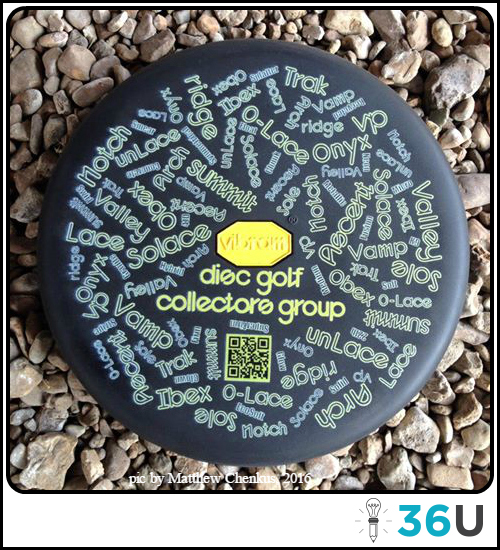
However, more often than not, low ACT scores are symptomatic of one prevailing problem: poor reading comprehension. A student who has weak reasoning and math skills may score poorly on the math and science tests. A student who doesn’t understand the basics of grammar and punctuation will likely score poorly in English. But the student who doesn’t read well will be penalized on all four subject tests. As strange as it may sound, many times low ACT scores can be traced back to a student’s ability to read and comprehend.
(All of the released ACT items below are from 2015-2016 Preparing-for-the-ACT Guide and are the property of ACT Inc., not 36 University.)
The English Test and Reading Comprehension
Examine the two items below. By my count, they are representative of 24 of the 75 English items from the 2015-2016 Guide, and they require strong reading comprehension skills! As you can see, a struggling reader will struggle with the English test.
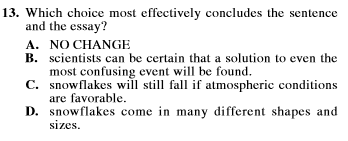
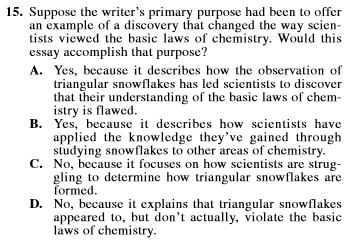
(If you missed our recent post The Juggling Act Required by the ACT, click here.)
The Math Test and Reading Comprehension
Maybe it’s not surprising that the English test requires strong reading skills, but the math test is text-heavy also. In fact, 39 of the 60 items from the 2015-2016 Preparing-for-the-ACT Guide required students to read at least 3 lines of text. Not all math items are like the three shown below, but many of them are.
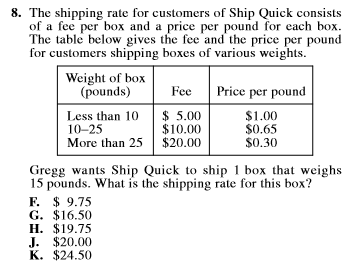
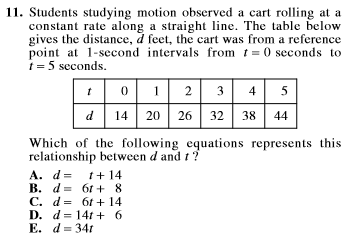
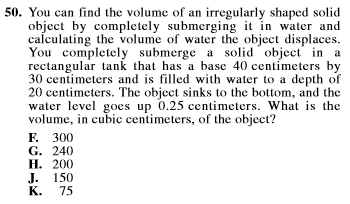
The Reading Test and Reading Comprehension
Of course, the reading test is all about reading comprehension, and it’s one-fourth of an ACT score! Sure, a fair number of the 40 items ask students to interpret meaning from what is explicitly stated in the text. However, a fair number also ask students to reason implicitly to determine inferences, main idea, compare and contrast, etc. It comes as no surprise that strong reading skills are required to score well on the reading test.
The Science Test and Reading Comprehension
To understand the importance of reading skills on the science test, you must first understand the test’s format. The science test consists of six or seven separate scenarios. One of those scenarios is comprised of only text, usually four or five paragraph’s worth. It is like a mini version of a reading scenario. All of the other scenarios require a significant amount of reading, too. In the 2015-2016 Preparing-for-the-ACT Guide, the other five passages accounted for another 19 paragraphs, almost 4 paragraphs per scenario.
To give you an idea of a typical ACT science passage, we have provided a sample passage from the same ACT publication we’ve used for this entire post:

Summary
As you can see, reading comprehension skills are needed on every section of the ACT. Scores in the 13 – 17 range are often a result of insufficient reading skills and not from a lack of content knowledge.
What Can I Do?
Be intentional! In your casual reading—through a news article, or your favorite blog, or that new novel—stop occasionally and ask yourself some very specific questions:
“What was the main idea of that paragraph?” (Try to summarize in 5 words or less.)
“Were the paragraph’s sentences presented in a logical sequence?”
“What was the main idea of the passage?”
“Were the paragraphs within the passage placed in a logical sequence?”
Intentionally evaluating and critiquing your reading material will make you a better reader and writer – and an improved ACT score will be a by-product of your new skills!
Recent and Related Posts
Get a Copy of Your ACT and Fix the Mistakes
The Juggling Act Required by the ACT English Test
3 Types of Probability Items to Expect on the ACT Math Test
36U Blog List
36U ACT Tips
36U ACT Prep Program
Get a Copy of Your ACT and Fix the Mistakes!
Imagine retaking a test without knowing what you missed the first time. Unfortunately, that’s how too many students operate on the ACT. It doesn’t have to be that way!
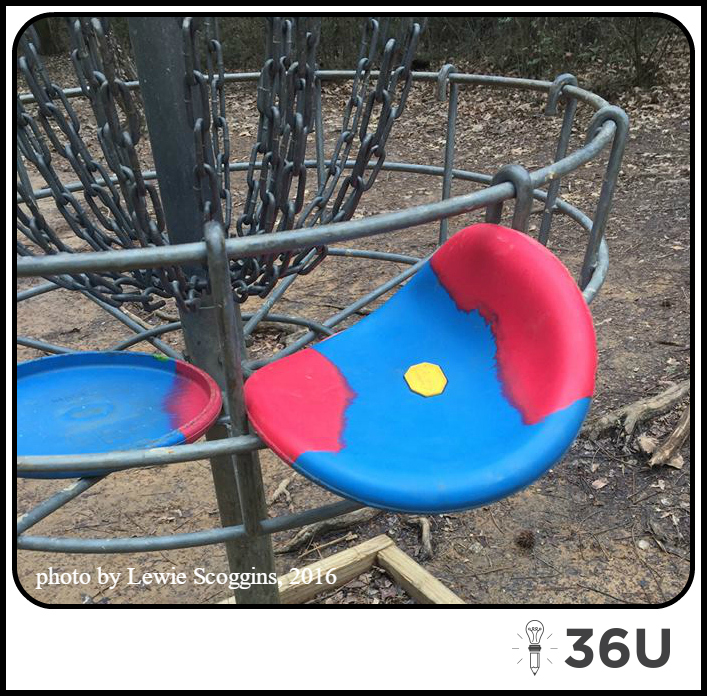
Buy a Copy of the Test You Took
Did you know that ACT allows you to purchase a copy of the questions from your exam, a list of your answers, and the answer key? ACT calls it Test Information Release, and it costs $20. The option is available for only certain dates, but both the April and June ACT administrations —4/8/17 and 6/10/17—are Test Information Release dates. If you took the optional writing test, ACT will also include the writing prompt, the scoring rubric, and the scores you received on your essay.
Is It Too Late for Me?
If you have already taken an ACT and didn’t purchase the Test Information Release, ACT gives three months after the test date to order the test. So, if you took the April 8, 2017 ACT, it’s not too late for you to get a copy of your exam! To order, you’ll need to fill out the Test Information Release Order Form.
Final Word
Your quarterback keeps missing the post pattern? Coach is likely to have him throw several during practice. Your lead chair clarinet keeps missing a difficult section in the latest musical piece? She is likely to practice the piece again and again until she gets it. What better way is there to begin improving your ACT score than to work through the problems you missed? Take it one step further: make a list of topics that are difficult for you and review those concepts until you master them.
Are you interested in skill-targeting ACT Prep? Check out the service at 36U!
Recent & Related Posts:
The Juggling Act Required by the ACT English Test
3 Types of Probability Items to Expect on the ACT Math Test
Origami: Sharpen Visual-Spatial Skills & Boost Your ACT Math Score
36U Blog List
36U ACT Tips
36U ACT Prep Program
The Juggling Act Required by the ACT English Test
The ACT opens with students taking the English portion of the test. On the ACT English test, students are given 45 minutes to answer 75 items. Not only does this section have more items than any of the other sections, but it also allows students, on average, the least amount of time per item: 36 seconds. However, neither endurance nor a quick pace is the most needed skill.

The Structure of the ACT English Test
The 75 items are divided over 5 essays, each with 15 items. The structure for each set of 15 is basically the same. Most of the first 12 to 13 items ask students to fix local issues, those pertaining to one or two sentences. Three to four of the questions, most of which are likely to be found at the end of the set of 15, ask students to evaluate a larger portion of the passage.
On the local issue items, students are tested on a wide range of concepts like subject-verb agreement, modifier placement, punctuation usage, etc. Below, we’ve placed a couple of examples from ACT Inc’s Preparing-for-the-ACT Guide (2015-2016). Both items can be answered correctly by using only the sentence in which the underline is contained.

The final two to three items, and sometimes an item or two found earlier in set of 15, test students’ understanding on a broader scale. Notice how the items below require students to understand the structure and purpose of the entire passage.

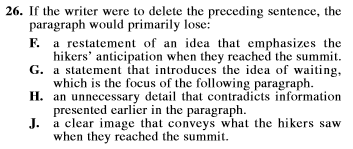
The Most Critical Skill
As you can see, there are two distinctly different types of questions: ones that require students to evaluate on a local level and ones that require evaluation of the entire passage. Students who expect to score in the 30s must be able to handle issues within individual sentences while assessing the structure and meaning of the entire passage. This juggling act is the most critical skill needed to ace the ACT English test.
Recent & Related Posts:
3 Types of Probability Items to Expect on the ACT Math Test
Origami: Sharpen Visual-Spatial Skills & Boost Your ACT Math Score
36U Blog List
36U ACT Prep Program
Three Types of Probability Items to Expect on the ACT Math Test
You walk into the testing site and sit down, nervous but confident. You know you’ve prepared and you’re ready to give the ACT one last shot. You are sure this will result in your best your score yet. The English test is no problem. You open the math test and begin working, but something has changed…

Modifications to the ACT Math Test
Maybe you haven’t heard, but ACT announced test-takers could look forward to “the inclusion of additional statistics and probability items in the mathematics test” (Source: ACT FAQ). ACT hasn’t released volumes of materials on the changes, but the last two released exams contained in the Preparing-for-the-ACT Guides are consistent with the announced changes and provide the best clues we have on the amendments. We have divided the following items into three categories. The items are provided to give you examples of the ways you can expect ACT to test probability. These are screenshots from the ACT’s booklets, not the property of 36 University.
Item Type 1: Basic Probability Items
These items require you to apply the basic probability formula:
P(A) = (# of events corresponding to A/ total # of possible events)
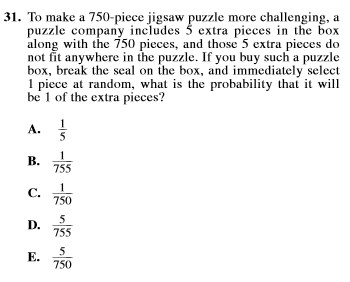
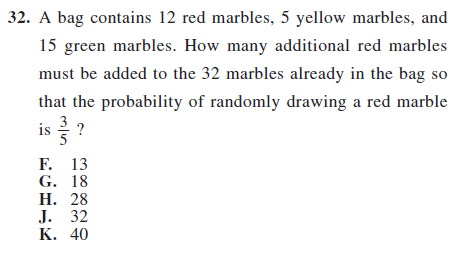
Item Type 2: Probability from Graphs
These items require you to utilize your graph reading skills and basic probability concepts.
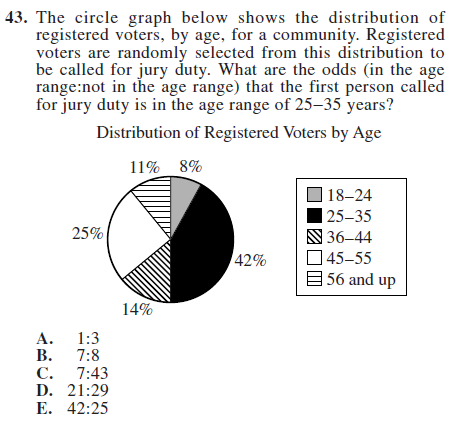
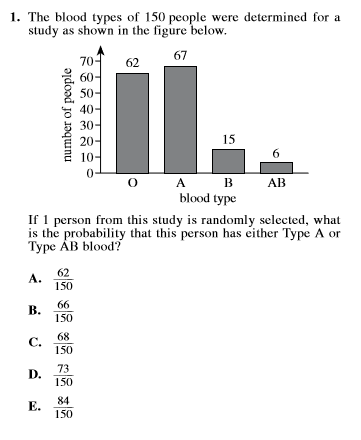
Item Type 3: Probability of Multiple Events
Multiple events probability items ask you take one additional step. Often, that means you’ll just need to multiply the probabilities of each event. Here are examples:
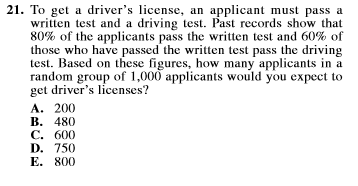
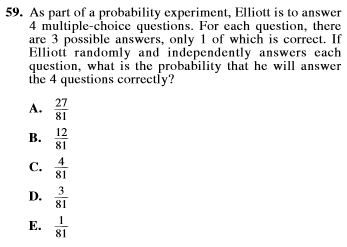
Wrapping It Up
The good news is these items aren’t that complicated and are likely to replace more difficult items. These changes may mean it’s time for you to brush up on basic probability, especially since ACT may begin testing these concepts in more challenging ways.
Do you want to see these items worked? Check out our follow-up post. For more practice, check out the online Sample Items published by ACT. Specifically, try Set 3 Item #2.
Recent & Related Posts:
Post Follow-up: Working the New ACT Math Probability Items
Origami: Sharpen Visual-Spatial Skills & Boost Your ACT Math Score
Your Week-Before-the-ACT Game Plan (Part 4 of 4: Science)
Your Week-Before-the-ACT Game Plan (Part 3 of 4: Reading)
Your Week-Before-the-ACT Game Plan (Part 2 of 4: Math)
36U ACT Tips
36U Blog List
36U ACT Prep Program
Origami: Sharpen Visual-Spatial Skills & Boost Your ACT Math Score
Learning and test scores shouldn’t always be about test prep. It’s more fun when a good test score is a natural result of time spent learning…
For as long as I can remember, I’ve been fascinated by turning sheets of paper into dragons, frogs, and flowers. Fortunately, access to origami instruction has changed drastically since the days I used to forage through book after book of origami illustrations in the school library. Oh, the convenience of the Internet!
Origami and Visual-Spatial Skills
Engineers, architects, software user experience designers, and myriad other professionals excel because of their visual-spatial skills. Paper-folding may seem like a strange way to develop skills for such high-tech professions. When working with origami, you’ll practice some of these skills:
- Diagram Interpretation
- 2-d and 3-d Rotation Visualization
- Design Manipulation
How Can I Get Started?
Start by picking a simple design and trying to fold it. Peruse a few websites (Option 1, Option 2, Option 3) until a design catches your eye. Along the way, make sure to digest key terms like mountain fold, valley fold, and reverse fold. Become acquainted with the concept of building a base.
From there, you can progress toward more difficult designs. Instructions for creating the dolphin from the video above can be found here.
Can Working with Origami Help My ACT Score?
Visual-Spatial skills such as mental rotation, spatial perception, and spatial visualization have been linked to higher ACT Math scores (Sorby and Baartman, 2000). You’ll see those same skills tested in these recently released ACT Math items:
Reflection over the y-axis?
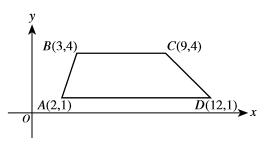
Lines of Symmetry?
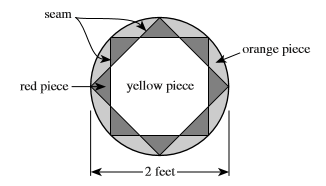
Interpreting a diagram:
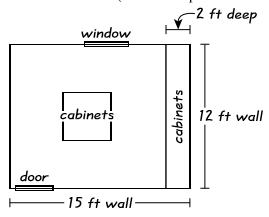
Ratio of areas?

Try it. Share it.
I get a real kick out of completing a new design. I hope you do, too. If you’re intrigued by origami, try it and share your creation on our Facebook page. You’ll be having fun and practicing critical skills!
-Kendal Shipley, Ed.D.
Recent Posts:
Your Week-Before-the-ACT Game Plan (Part 4 of 4: Science)
Your Week-Before-the-ACT Game Plan (Part 3 of 4: Reading)
Your Week-Before-the-ACT Game Plan (Part 2 of 4: Math)
36U ACT Tips
36U Blog List
Your Week-Before-the-ACT Game Plan (Part 4 of 4: Science)
This is the final installment of our week-before-the-ACT game plan. Let us know how your game plan works on the big test!

The Setup
It’s nice to finish off the ACT with another shorter test. The Science Test, like the preceding Reading Test, will give you 40 minutes to answer 35 items. Those 35 items will be spread over 6 to 7 scenarios.
The Tables Have So Many Rows and Columns
Do you need to be reminded how complicated ACT Science tables can get? ACT is an expert at packing a ton of info into a single table. And the more information they put in a table, the more confusing and intimidating the table is likely to be.
Use one simple principle to read the tables efficiently: the first column almost always tells you WHO the table is about, and the rest of the columns tell you WHAT they are going to tell you about the WHO. Take the table below, for instance. The table is about different months. For each of those months, the table gives you the temperature, the pH, and the dissolved oxygen reading. This principle works no matter how difficult the table becomes.

And The Graphs Have So Many Plots and So Many Axes
Do they have to display so many relationships on a single graph? Along with multiple graphed relationships, you are often given multiple x- and y-axes. Yes, the graphs can get complicated in a hurry. Your ability to locate relevant information and interpret it will be crucial. Follow these two steps to simplify the process:
- Use the key to figure out which graph corresponds with which axis. In the graph below, you see the solid temperature graph corresponds with the axis on the left, and the dashed pH graph corresponds with the axis at the right.
- Be prepared to trace lines to find specific values. Can you find the pH level at the 5-minute mark? Start at the 5-minute mark and draw a line up to the solid pH line. From there, trace right to the pH axis. The pH is about 6.6.
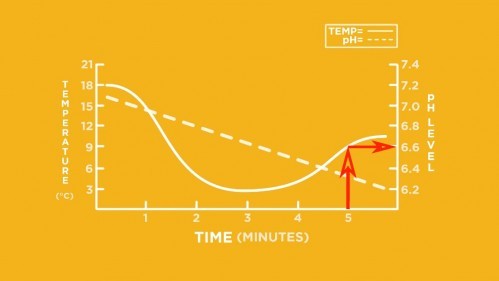
What About the Text-Only Passage?
The Conflicting Viewpoints scenario will be the only scenario comprised of only text. Several viewpoints will be presented. As you read the viewpoints, underline key details from each, making sure to note how they differ. You will be asked to differentiate between the perspectives.
A Game Plan
Read the introductory text of each scenario carefully. The text is used to explain the setting of the research or experiments. Understanding the setting is often critical to interpreting the tables and graphs correctly.
For each table, identify WHO the table is about and WHAT they are going to tell you about the WHOs. For graphs, note the input axis label (horizontal axis) and the output axis label (vertical axis) and check to see if there is a key. You will not likely need to spend any significant time reading the tables and graphs before you get to the questions. Use the questions to tell you where to focus on the tables and graphs.
Many of the more difficult items will require you to synthesize information from several pieces of the scenario. Information found in the text may be key to understanding a table. Data from two graphs may be required to answer a single item. Many times, these difficult items are found in the final few questions of a scenario.
Recent Posts:
Your Week-Before-the-ACT Game Plan (Part 3 of 4: Reading)
Your Week-Before-the-ACT Game Plan (Part 2 of 4: Math)
Your Week-Before-the-ACT Game Plan (Part 1 of 4: English)
Your Week-Before-the-ACT Game Plan (Part 3 of 4: Reading)

This is the 3rd part in our 4-part series on finalizing your game plan the week before the ACT. It’s time to put a game plan in place for the Reading Test.
The Setup
There is no mystery here: you’ll have 35 minutes to answer 40 items. The 40 questions will be evenly divided over 4 passages. Each passage is fairly lengthy – almost 750 words (a little shorter than this blog post). Oh yeah, don’t forget that one of the passages will likely have two separate texts. That’s a relatively new twist. The first 6 or 7 items on the “double text” passage will ask you about the passages separately. The last few will ask you to evaluate relationships between the passages. If you want to give a double text passage a try, click here.
Start with the Questions or the Passage?
Some students insist on reading the questions before they head to the text. Some of these students even go so far as scavenging through the passage looking for answers rather than reading it. Students who use this approach often have difficulty perceiving big picture concepts like main idea or author’s purpose, and we know those questions will be asked. Students who have taken several ACT Reading tests should have a pretty good idea of the types of questions they ask already (more on this shortly). Other than knowing which details are targeted in the questions, there isn’t much to gain by reading the questions first. I suggest starting with the passage, reading slowly enough to remember details and at the same time looking to piece together the big picture.
Even students who read the passage often read it so hurriedly they miss key information. Either the average student reads almost twice as quickly as I do (in my experience, they usually get to the questions in about 2 minutes and it takes me about 4), or they aren’t reading carefully enough. Speeding through the passage in order to start the questions ends up costing students time because they find themselves having to reread a large portion of the passage to find answers. I find if I take my time reading the passage, making sure I understand the text, then I can run through the questions quickly enough to stay on pace.
The Passages Change; The Questions Stay the Same
As I mentioned earlier, we know what questions they are going to ask. Sounds rather bold, right? It’s not, really. Reading comprehension means essentially the same thing whether you’re reading an ACT passage or the sports page or Moby Dick. Skilled readers are able to visualize and remember details while staying sensitive to a passage’s purpose and tone. The ACT’s questions are going to test how well you remember those details and how well you comprehend purpose and tone, too.
So, here’s what you can expect from each set of 10 items. There will be several questions based on what is explicitly stated in the text. Usually these answers can be found in a particular sentence or two within the passage. We call these Level 1 items. Level 2 items will ask you to read between the lines to figure out what the author meant. These answers will usually be found in a specific area of the text. You may have to reread a few sentences. And the most difficult items will test your understanding of the passage on a larger scale: Why is the purpose of the 3rd paragraph? What is the main idea of the passage? We call these Level 3 items. These are precisely the types of questions that may give you trouble if you choose the scavenger hunt approach.
A Game Plan
My game plan for attacking the ACT Reading is something like this:
Though the passages seem lengthy, this is one of the ACT’s shorter sections. There are only 40 items, and it will be over in 35 minutes. That’s good, because it won’t leave me mentally drained. Stay calm and confident. Keep a steady, moderate pace. Read the passages carefully, underlining details that seem important. Details will help me answer Level 1 and Level 2 questions. At the same time, prepare for Level 3 items by observing the structure of the passage and noting the writer’s perspective and purpose. On average, I have a little less than 9 minutes per section. From previous practice, I know I can comfortably read through most passages in about 4 minutes, leaving me about 5 minutes for the questions.
If your approach is radically different than mine, now is probably not the time to change it up. Write out your own game plan, one that matches what you have already practiced. At the end of the day, you want to be confident your approach gives you the best opportunity to make your best score.
Recent Posts:
Your Week-Before-the-ACT Game Plan (Part 2 of 4: Math)
Your Week-Before-the-ACT Game Plan (Part 1 of 4: English)

